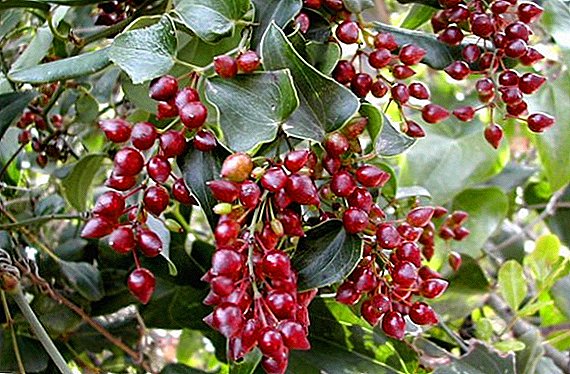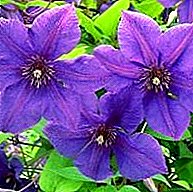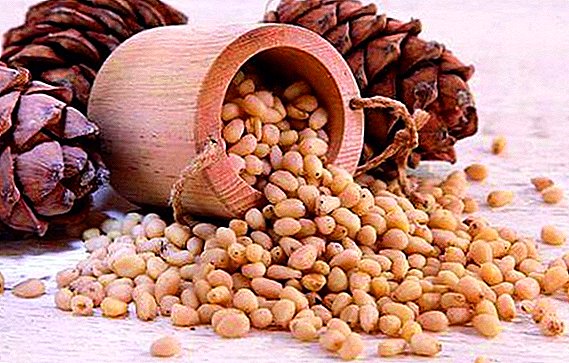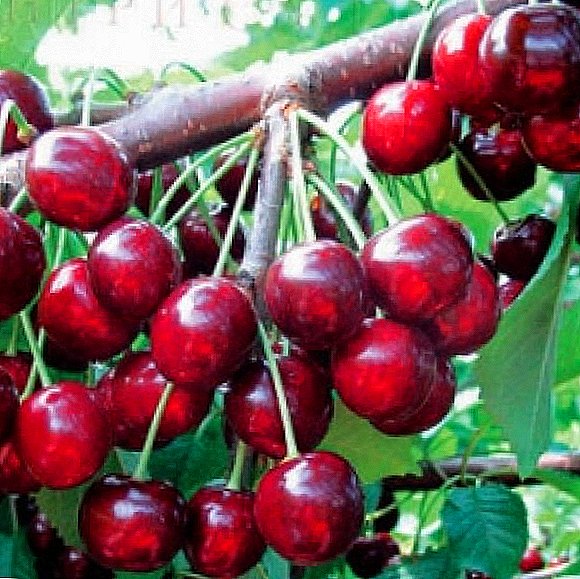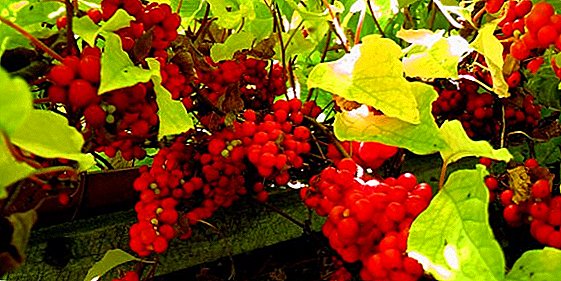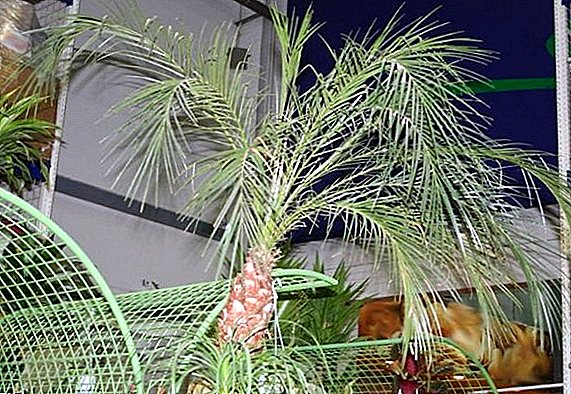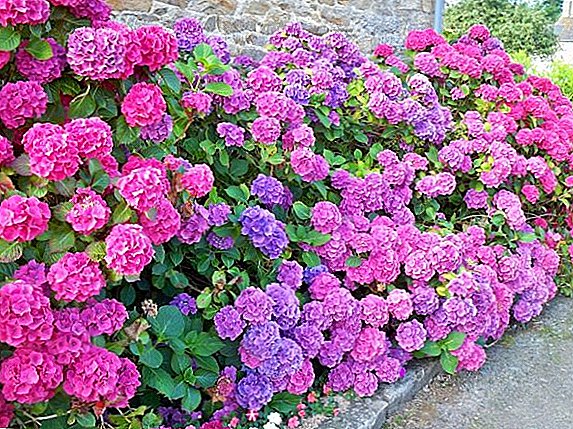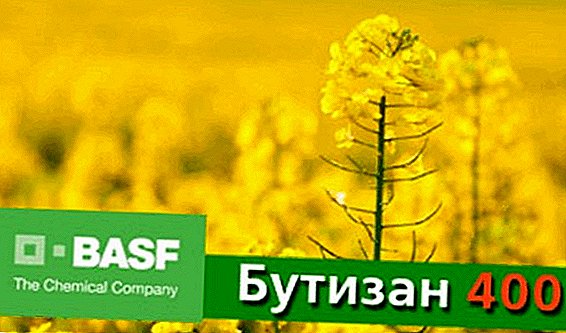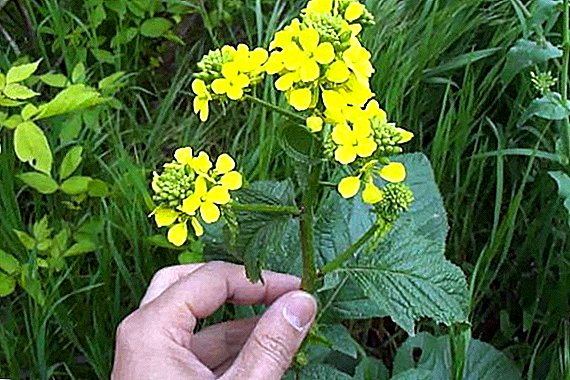 Such a seemingly simple plant as a field mustard (wild) is spread almost all over the globe, but not all people know what useful features and qualities it possesses. To understand what wild mustard really is, you should refer to its direct description and detailed description.
Such a seemingly simple plant as a field mustard (wild) is spread almost all over the globe, but not all people know what useful features and qualities it possesses. To understand what wild mustard really is, you should refer to its direct description and detailed description.
Brief description and distribution
Wild one-year spring cruciferous weed germinates from a short taproot, has an upright, branchy, stiff-haired stem up to 60 cm high, lowered petals and umbrella-shaped golden-yellow miniature flowers. The fruit of the plant is bivalve pods with sword-shaped long noses and spherical, dark brown, ripening seeds in one row.
Very often weeds can bring not only harm, but also benefit. Learn how to use the beneficial properties of quinoa, dodder, thrown amaranth, ambrosia, and bruise in traditional medicine.

Important! Mustard is often confused with wild radish because of a similar appearance, but the difference between these representatives of the flora lies in the petals: if in the first plant they are omitted, in the second, on the contrary, they are raised.Wild field mustard is widespread in Egypt and in the countries of Asia, in Russia it is found everywhere on nutritious black earth soils. Especially it is grown in France, Holland, India, Kazakhstan, China and Pakistan.
Chemical composition and healing properties
The mustard field plant is enriched with various beneficial chemicals. Consider its detailed composition:
- flavonoids;
- carbohydrates;
- steroids, glycosides, saponins;
- essential oil;
- protein;
- organic and unsaturated acids;
- mineral complex: potassium, calcium, sodium, magnesium, sulfur and phosphorus;
- in leaves: iron, copper, zinc, molybdenum, cobalt, chlorine and manganese;
- brassinosteroids (stressful adaptogens);
- vitamins: A, B, C, K.

- increases the secretion of gastric juice;
- stimulates expectoration of sputum for respiratory diseases;
- increases libido;
- accelerates wound healing;
- suppresses pathogens.
Important! Due to the glycosidic structures contained in mustard seeds, the plant has a pronounced blood-stimulating effect on the human body.
Application
Since ancient times, mustard field has been widely used in many areas - cosmetology, medicine, folk remedies.
Nasturtium, linden, lettuce, amaranth, marsh marigold, marigold, periwinkle, parsnip, nettle, peony, momordica, borage, bird cherry, purslane, savory have found their application in cosmetology.
 In cosmetology, it is valued as a skin care and rejuvenating agent. Effects from the use of cosmetics on the basis of field mustard:
In cosmetology, it is valued as a skin care and rejuvenating agent. Effects from the use of cosmetics on the basis of field mustard:
- restores cellular balance in the skin;
- aligns the relief of the face;
- relieves acne and its traces;
- lightens freckles and age spots;
- stimulates blood flow to the epithelium;
- activates hair growth;
- nourishes and moisturizes the skin;
- enhances the production of collagen and elastin.

Recipes of traditional medicine
Since ancient times, people used field weeds, called mustard, in folk medicine, because, despite their harm and toxicity, they have different healing properties. Here are some common medical recipes.
Did you know? Wild mustard stalk is considered poisonous. For example, pigs that have eaten barley infested with mustard suffer from severe poisoning, and if the animals eat seed meal, this will give impetus to intestinal diseases.
Recipe 1. Foot bath to eliminate the first symptoms of a cold.
In a large bowl you need to take warm water (about 35-degree temperature), add 3 tablespoons of mustard powder and keep your feet in the prepared water for 10 minutes. But the effect of such a procedure will be manifested only at the very beginning of the disease.  Recipe 2. For the treatment of urolithiasis.
Recipe 2. For the treatment of urolithiasis.
1 tablespoon of seeds is poured with seven glasses of pure water and boiled over low heat for 5 minutes. Then the resulting broth is infused for 2 hours and filtered. Take mustard medicine should be 2 tablespoons 3 times a day.
Recipe 3. Baths with neuralgic pains.
First, prepare the gruel of mustard powder (400 g) by the method of gradual addition of water. After preparation, the mixture is dissolved in a warm bath (temperature not higher than 37 ° C). It is necessary to be in the treatment bath for no more than 5 minutes, and after it you should wash thoroughly under a warm shower, dry yourself and wrap yourself in a soft blanket.  Recipe 4. An auxiliary and quick way to alleviate the symptoms of sinusitis and severe rhinitis.
Recipe 4. An auxiliary and quick way to alleviate the symptoms of sinusitis and severe rhinitis.
Soak a clean piece of cloth in hot water, wrap a couple of tablespoons of mustard in it, roll it up and put it on the nose bridge or between the eyebrows.
Recipe 5. Ointment for the treatment of rheumatism.
Ingredients Required:
- 50 g of mustard powder;
- 50 g camphor;
- 10 ml of alcohol (70%);
- 1 egg white.

Did you know? Despite its pronounced "toxicity", wild field mustard has a high honey productivity - from 50 to 100 kilograms per hectare of land. Mustard honey obtained from it has many healing qualities, and also has a pleasant aroma and sweet taste.It is important to remember, no matter how useful properties the presented type of mustard might have, no matter how many therapeutic recipes are “walking” on the Internet - field mustard is not completely safe, therefore, its application should be treated with extreme caution, and in some disease states it is desirable This generally consult a doctor.



